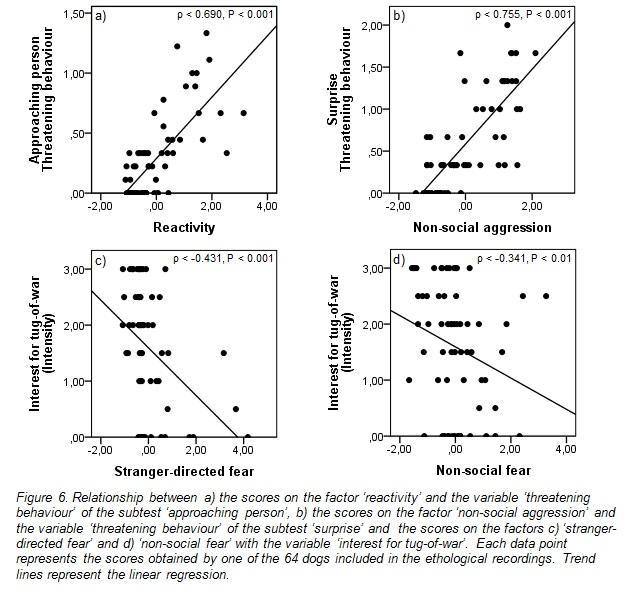Comparison of the BPH results with direct ethological recordings
Strong correlations were found between the scores the 64 dogs included in the ethological recordings got on the factors revealed by the PCAs performed on the behaviours included in the behavioural coding and their official test scores on the variables investigated in the BPH.
Dogs showing higher scores on reactivity and non-social aggression were significantly more likely to get higher scores on threatening behaviour in the subtest ‘approaching person’ and ‘surprise’, respectively (Figure 6a, b). Moreover, correlations were found between the dogs’ scores on reactivity and non-social aggression and the scores the dogs got on variables indicating fear. The two factors measuring fear towards strangers and non-social stimuli, respectively, showed significant correlations with a variety of variables indicating fear. Dogs showing higher scores on non-social fear tended to get higher scores on all investigated fear related variables of the three non-social subtests ‘surprise’, ‘rattle’ and ‘surface’ except flight. Additional both stranger-directed fear and non-social fear were negatively correlated with a variety of variables measuring the interest in play. The intensity of playing tug-of-war, for instance, significantly decreased with both increasing stranger-directed fear and increasing non-social fear (Figure 6c, d). Significant correlations could also be seen between arousal and the variable ‘positive greeting’ measured in the subtest ‘strange person’ and between curiosity and variables investigating explorative behaviours in the subtests ‘surprise’, ‘rattle’ and ‘gunfire’.

Responsible for this page:
Director of undergraduate studies Biology
Last updated:
05/25/14
